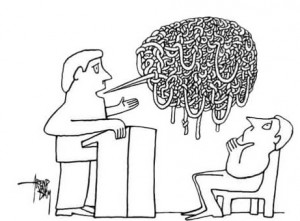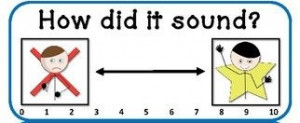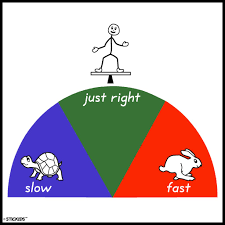Cluttering of Speech in Individuals
Cluttering of Speech in Individuals
Most Speech-Language Pathologists will likely think of stuttering when they hear the term “fluency problem.” While stuttering is the fluency condition that affects people the most frequently, cluttering is a different disorder that physicians should be aware of.
Cluttering or clutter speech is a fluency disorder in which an individual speaks with a very rapid and irregular rate of speech. Cluttering is characterized by excessive dysfluencies in speech such as prolongations, blocks, repetitions, revisions and interjections, along with increased or irregular speaking rate. In addition, individuals may also exhibit additional language and phonological errors and deficits in attention.
In spite of the fact that endeavors to change handedness don’t cause stuttering, the pressure that came about when a youngster had to switch hands may have resulted in an increase in the severity of stuttering for certain people.
Stuttering is a speech issue. Other than the “disfluencies,” in a person’s speech. People who stutter are ordinary. Stuttering may be impeding your speech but it never hinders your thoughts and intelligence. You can speak up your thoughts, you are no different than anyone without stuttering. But yes, you will be different if you have the drive to overcome stuttering.
What causes cluttering?
There is very little evidence for the causes of cluttering. Many people around the world are living with Stuttering. Further, both children and adults can have stuttering. Stuttering starts very early in life for most people. In other words, it starts during childhood. Furthermore, stuttering that would have started out as mild may have progressed to severe as time passes. Hence, it is very crucial to treat it as early as possible. People who stutter experience various other problems such as fear, anxiety, depression, shame, etc., which can in turn affect the quality of life (QOL). You might stutter some of the time or in certain situations and some people stutter when they are young and then grow out of it but some continue. A few other probable causes include:
Neurological factors: Cluttering may be associated with some neurological condition such as Tourette’s syndrome, learning disorder etc. cluttering is said to occur due to dysregulation of the anterior cingulate cortex and supplementary motor area.
Self-regulation factors: Cluttering is also reported to occur when the speaker’s regulation of thoughts and speech are not synchronized. The speaker is proposed to be talking at a rate that is too fast for his or her system to handle, resulting in breakdowns in fluency and/or intelligibility.
Signs and Symptoms of Cluttering
Common Characteristics
- Rapid Speaking Rate- Talking too fast
- Over-articulation of words- Abnormal emphasis on speech sounds while speaking
- Jerky Speech- Inappropriate pauses or breaks in speaking pattern
- Monotonous speech- Flat speech with no or very little intonation patterns
- Dysfluencies- Prolongations/ Pauses/ Blocks/ Repetitions etc.
Additional Characteristics (may or may not be observed)
- Phonological errors in speech
- Disorganized language and conversational skills
- Misarticulations
- Poor speech intelligibility
- Poor or disorganized handwriting
- Hyperactivity and distractibility
- Auditory perceptual difficulties
- Learning disorders
- Apraxia
Treatment for Cluttering
During speech therapy sessions, it should be used to improve cluttering using treatment methods that have been shown effective.
-
Increase awareness and encourage self-monitoring:

- Individuals with cluttering often do not have insight of their problem. Drawing their attention to their symptoms and increasing awareness, helps to a great extent in regulating their speech pattern and rate. Encouraging self-monitoring of their own speech, also draws their attention to their symptoms, which in turn will help regulate their speech, in a more effective way.
-
Focus on reducing speech rate

- One of the most common ways is by constantly reminding the individual to speak slowly.
- Another way is by using a speedometer as an analogy. Using a speedometer works very well with clutterers. A ‘speed limit’ of speaking is set and the speaker must consciously try to stay within the limits.
- Deliberate pausing is another effective way of reducing the speaking rate. The speaker is taught to deliberately pause between words, without rushing through them.
-
Focus on articulation and language errors

- It is recommended to start practicing with highly structured sentences (e.g., the speaker’s name and where he lives etc.) and gradually proceeding to normal conversational skills (e.g., open ended and abstract topics)
- In longer words which contain stressed and unstressed sounds, exaggerating the stressed syllables, along with consciously trying to pronounce all the unstressed syllables will increase the overall intelligibility and articulation of words (e.g., par-tic-u-lar, cro-ss-ed)
-
Focus on easing dysfluencies

- Fluency shaping techniques can be used to reduce dysfluencies. For tips and strategies for stutter-free speech, read ahead here.
Stuttering vs. Cluttering- How similar or how different?
| Symptom | Clutterers | Stutterers |
| Awareness of their problem | Usually absent | Usually present |
| Message or content | Usually not clear on what content is to be conveyed, often get derailed or confused | Usually clear on content to be conveyed |
| Speaking rate | Mandatorily abnormal. May be either very rapid or irregular and jerky | It can be normal or at times fast, when used as a secondary strategy to avoid stuttering |
| Common dysfluencies observed | Blocks, Prolongations, Repetitions, Pauses | Interjections, fillers, revisions, phrase repetitions, pauses |
| Articulation errors | Phonological errors present, often unstressed syllables are omitted | Usually no errors observed |
| Speech intelligibility | Poor speech intelligibility, speech often sounds slurred or mushy | Usually speech intelligibility is normal |
| Prosody | Often monotonous | Usually normal |
| Stress | Performs better, as they are more conscious of the way they speak | Performs poorer, as being conscious of their speech increases their fluency |
| Speaking in a foreign language | Perform better due to heightened awareness | Performs poorer due to increased awareness of own speech |
Reduce excess of disfluencies
Reducing the excessive amount of disfluencies should be another main objective of cluttering treatment in addition to decreasing the client’s speaking tempo, specialists say. It’s not always advisable to teach certain fluency shaping strategies, such as easy onset, in order to reduce cluttering.
People with cluttering often have anxiety, depression, and personality changes due to their Stuttering. A speech therapy program along with a structured counseling session can help promote better mental health. If you think your child is anxious or feels shy to speak, this is your chance. A good Speech Therapy program will surely promote better mental health. We would love to hear your comments/ reviews on the article, and other suggestions that you feel fit on cluttering. Kindly register and please leave us a reply.
View this post on Instagram
- Chandrakant Vishwakarma helping the world hear better! - May 8, 2019
- Candid with Bhanu Gupta - September 29, 2018
- In Conversation With Dr. Sonali Kataria - September 26, 2018



Leave a Comment
(3 Comments)
thanks for writing…
that is very helpful for me..
because, i am a patient for this….
thank you very much….
Well written! AD(H)D is another factor in cluttering. 😊
Thank you!
Categories
Recent Posts